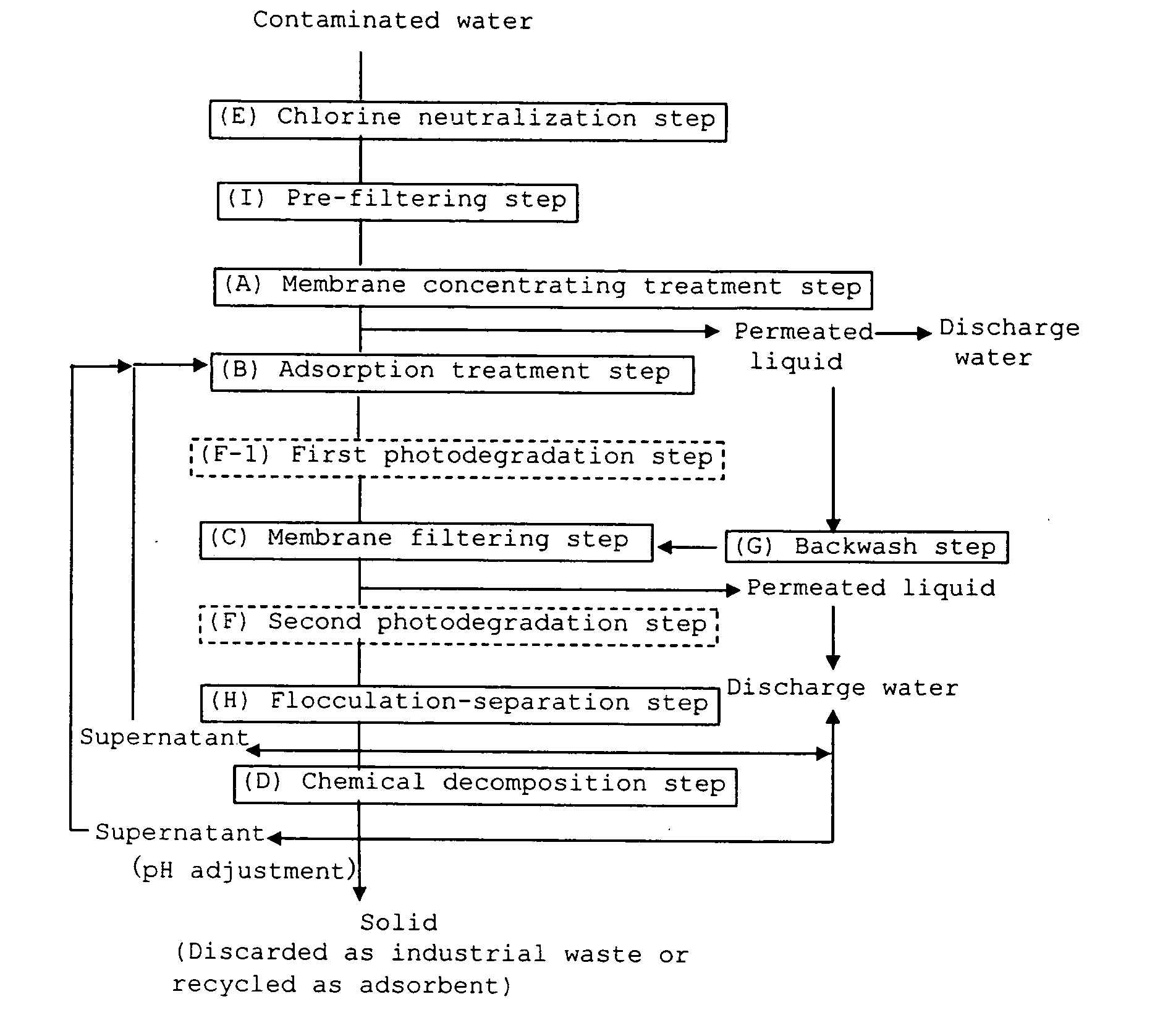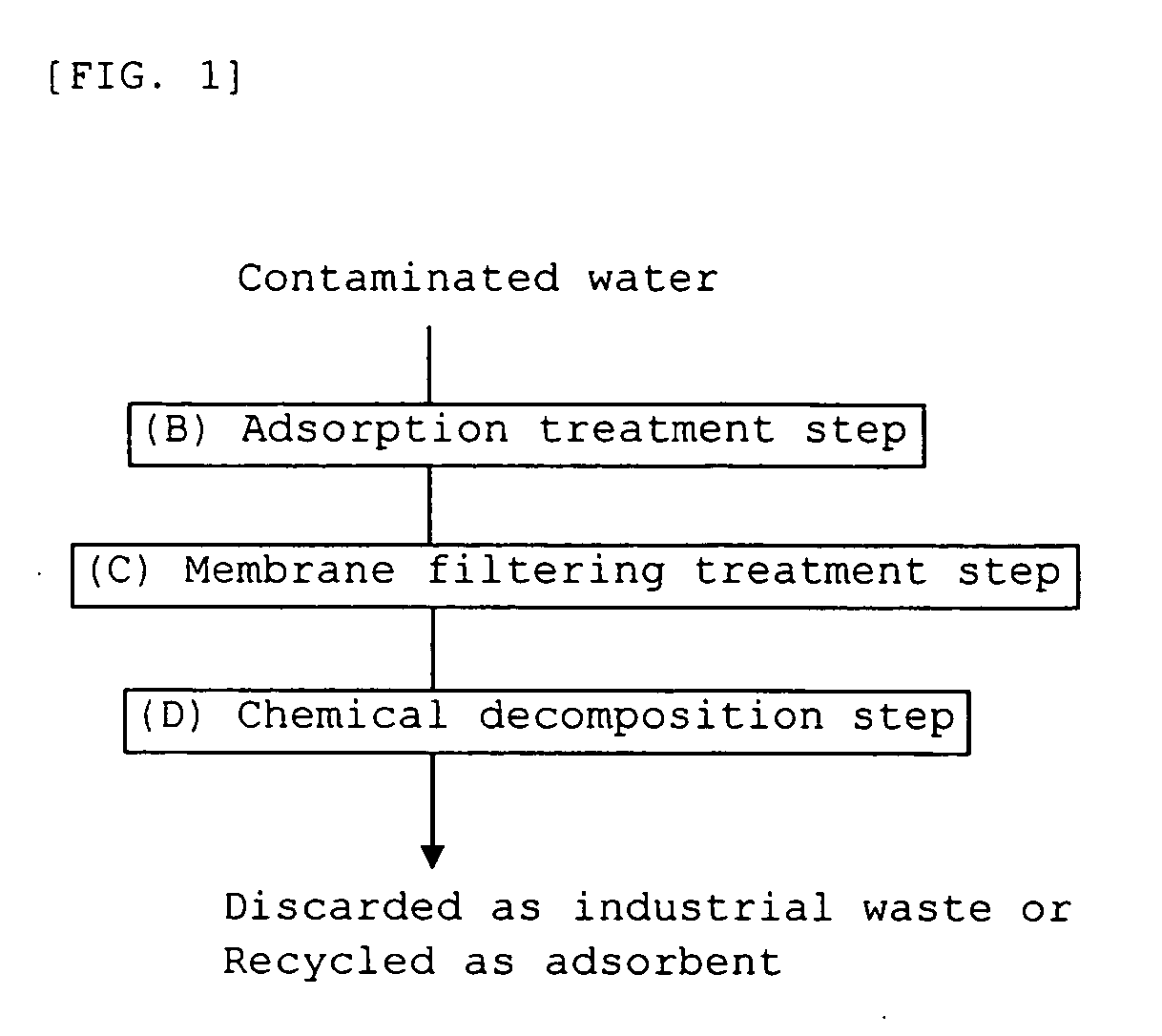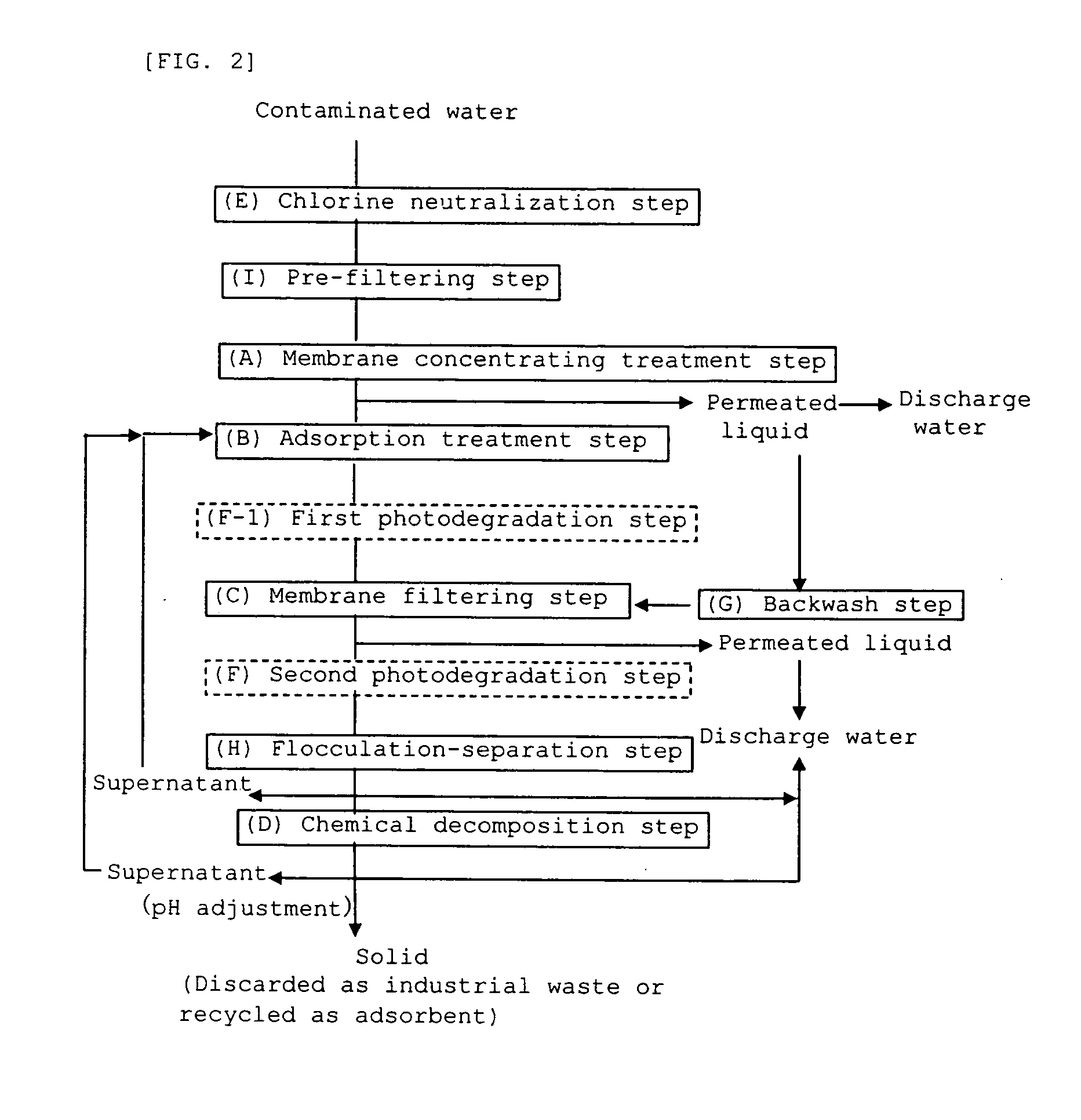Method for treating raw water containing hardly decomposable substance
a technology of raw water and decomposable substances, which is applied in the direction of multi-stage water/sewage treatment, membranes, other chemical processes, etc., can solve the problems of inability to say that the technique is desirable, large equipment investment, and inefficient separation and removal techniques, etc., and achieve the effect of efficient decomposition
- Summary
- Abstract
- Description
- Claims
- Application Information
AI Technical Summary
Benefits of technology
Problems solved by technology
Method used
Image
Examples
example 13
[0278] Contaminated water containing dioxins was treated for rendering it harmless with a treatment apparatus shown in FIG. 3.
(A) Membrane Concentrating Treatment (Including (E) Chlorine Neutralization Step and (I) Pre-filtering Step)
[0279] In a reducing substance introduction section 10, sodium bisulfite was added to contaminated water containing dioxins (concentration of dioxins 6,300 pg-TEQ / L, free chlorine concentration 50 mg / L) such that the mixture had a sodium bisulfite content of 150 mg / L, which was 3 times as large as the amount of the free chlorine while the mixture was stirred.
[0280] In a reverse osmosis treatment section 20, the contaminated water (electric conductivity 3,000 μS / cm) to which the sodium bisulfite had been added was caused to pass through a pre-filter to remove a large suspended substance, and then the contaminated water was membrane-treated with a reverse osmosis membrane having a salt rejection of at least 95%. In the above reverse osmosis treatment,...
PUM
| Property | Measurement | Unit |
|---|---|---|
| pore diameter | aaaaa | aaaaa |
| X-ray particle diameter | aaaaa | aaaaa |
| particle diameter | aaaaa | aaaaa |
Abstract
Description
Claims
Application Information
 Login to View More
Login to View More - R&D
- Intellectual Property
- Life Sciences
- Materials
- Tech Scout
- Unparalleled Data Quality
- Higher Quality Content
- 60% Fewer Hallucinations
Browse by: Latest US Patents, China's latest patents, Technical Efficacy Thesaurus, Application Domain, Technology Topic, Popular Technical Reports.
© 2025 PatSnap. All rights reserved.Legal|Privacy policy|Modern Slavery Act Transparency Statement|Sitemap|About US| Contact US: help@patsnap.com



